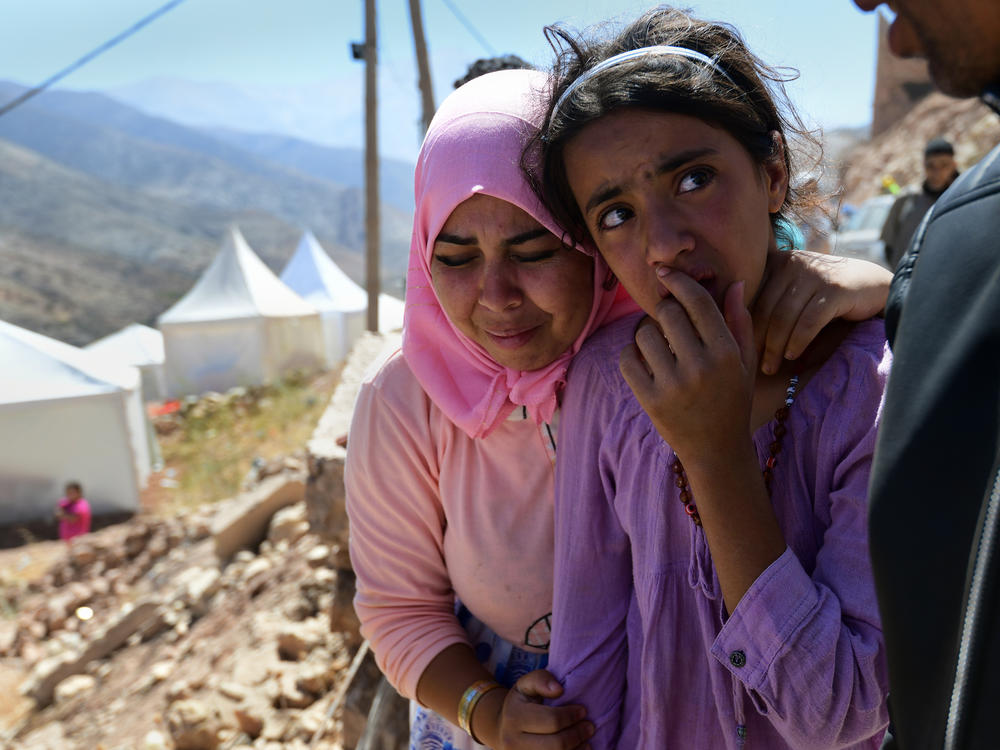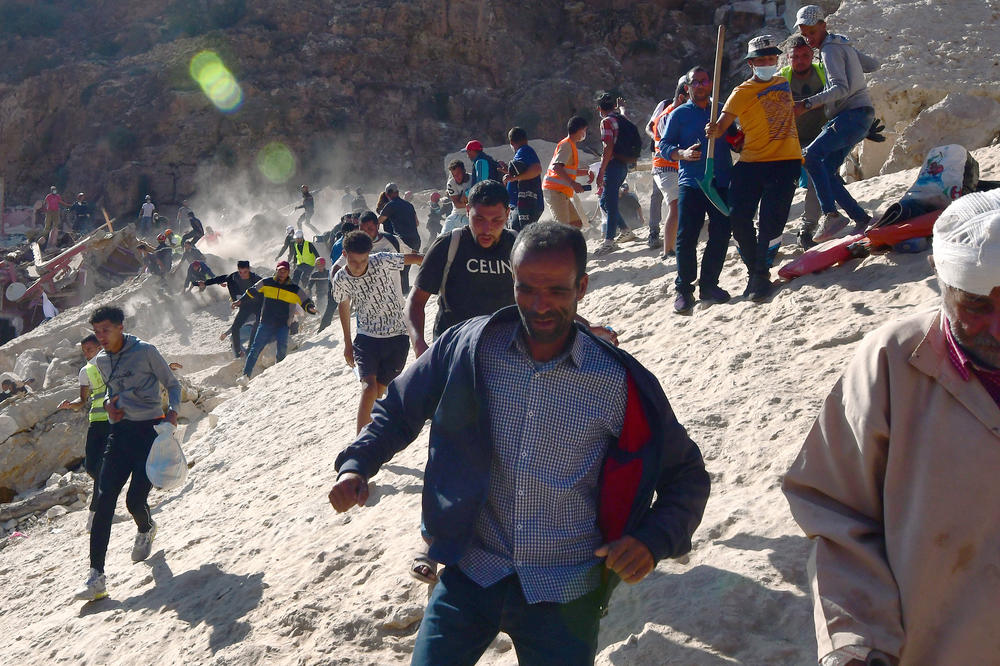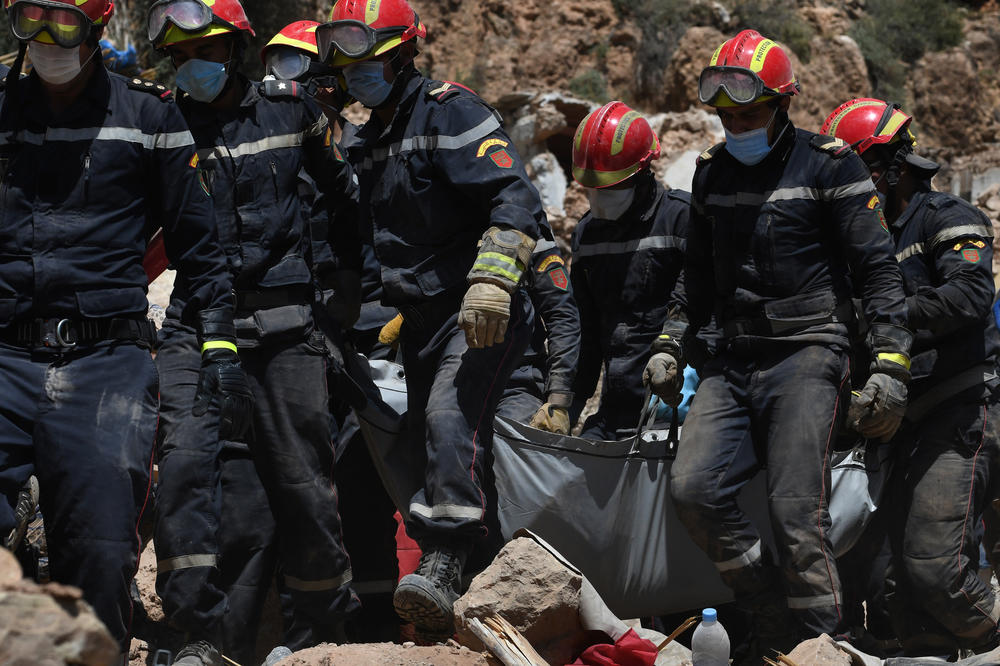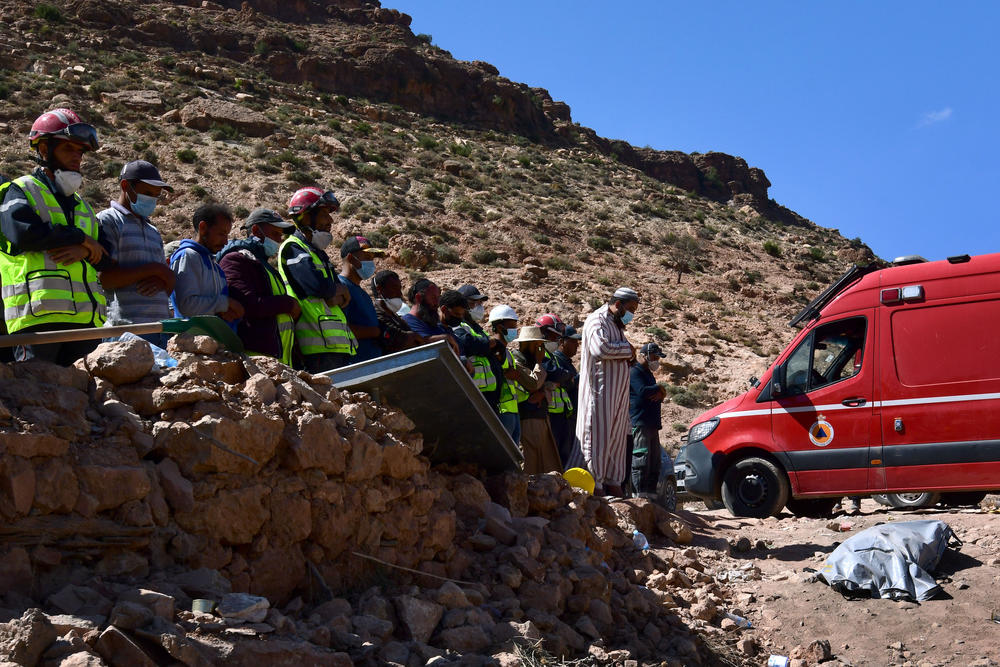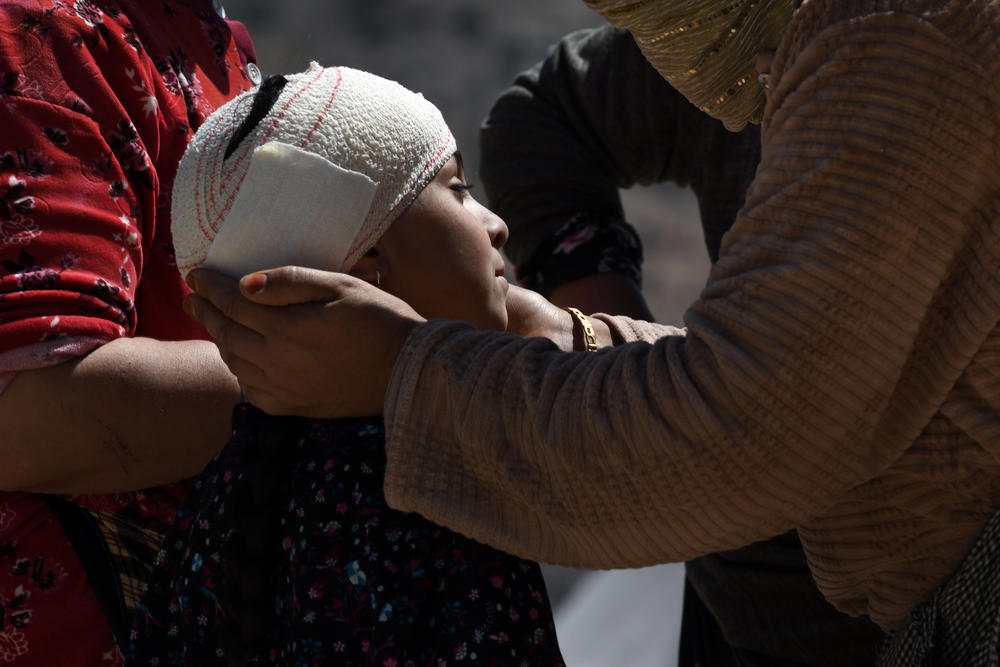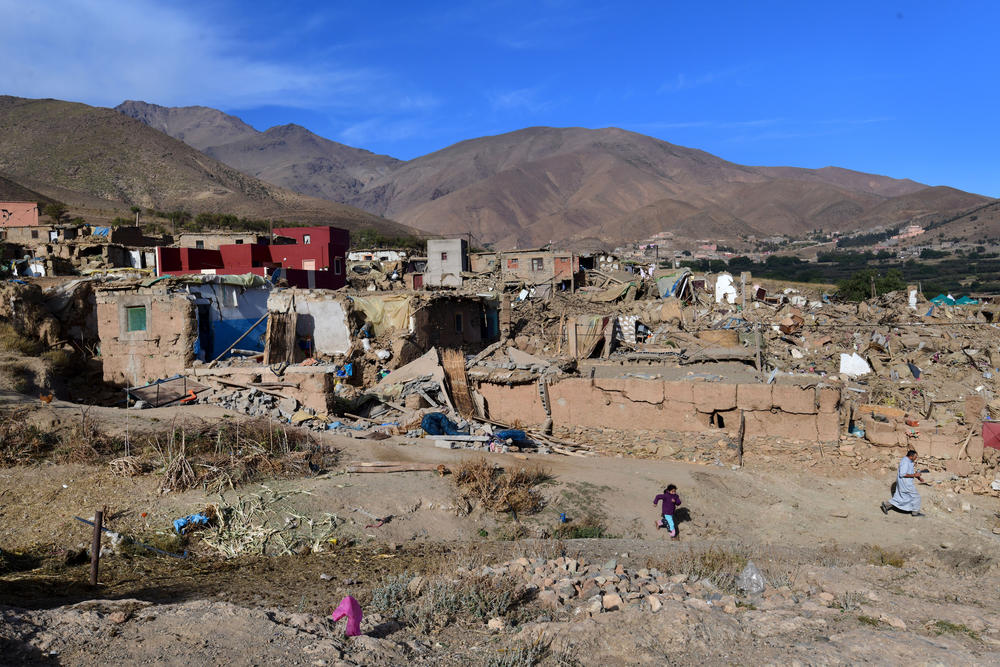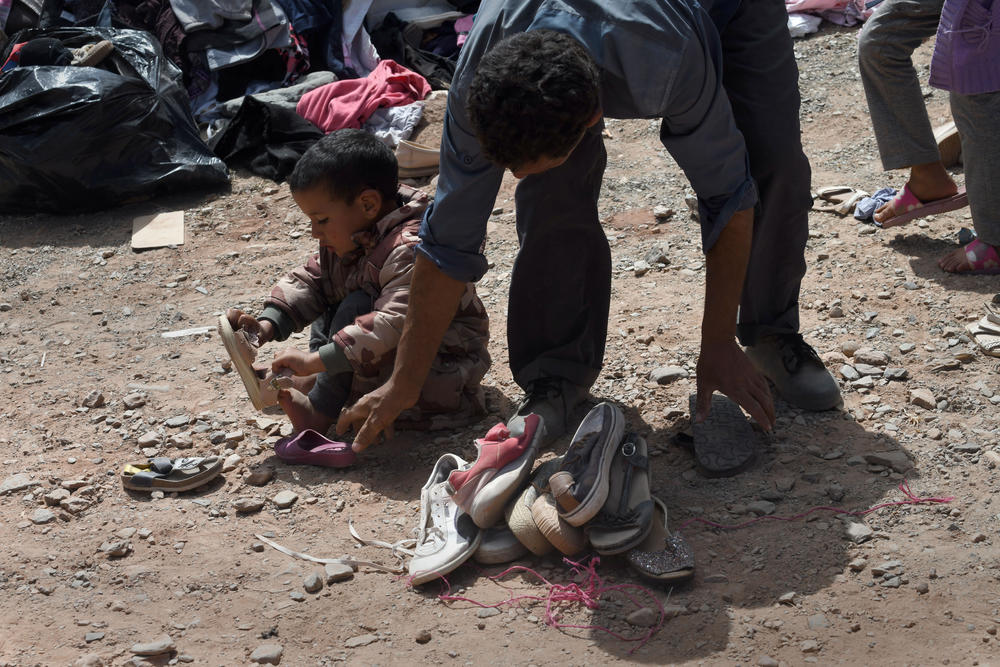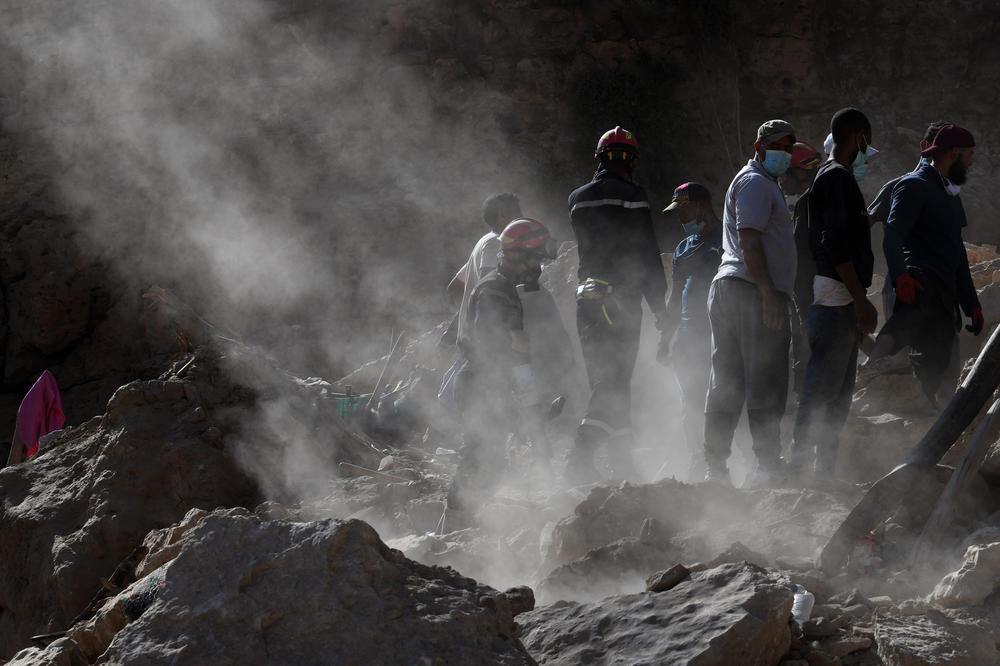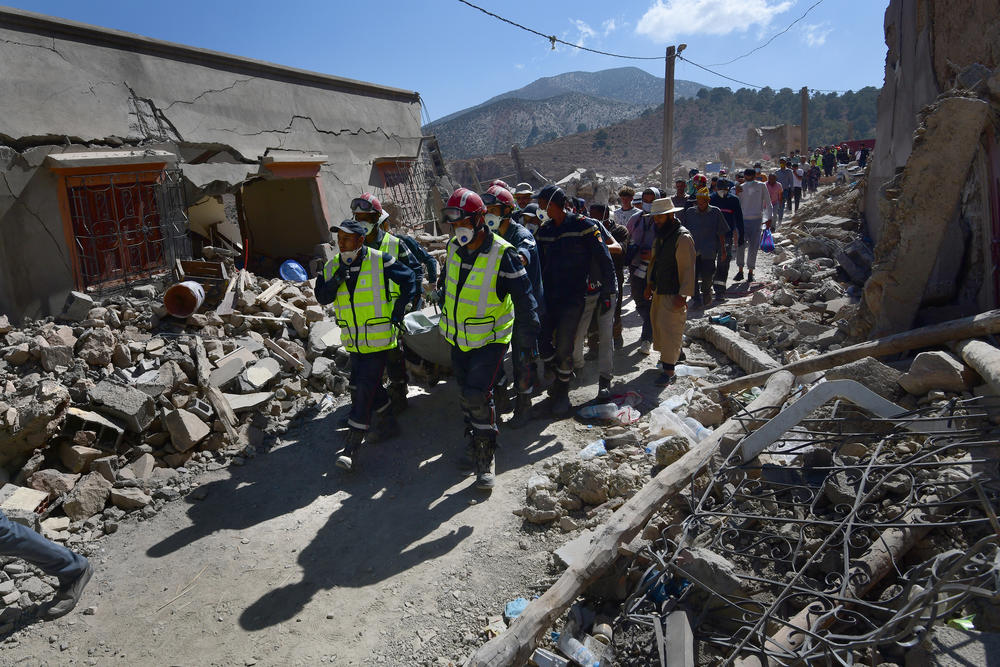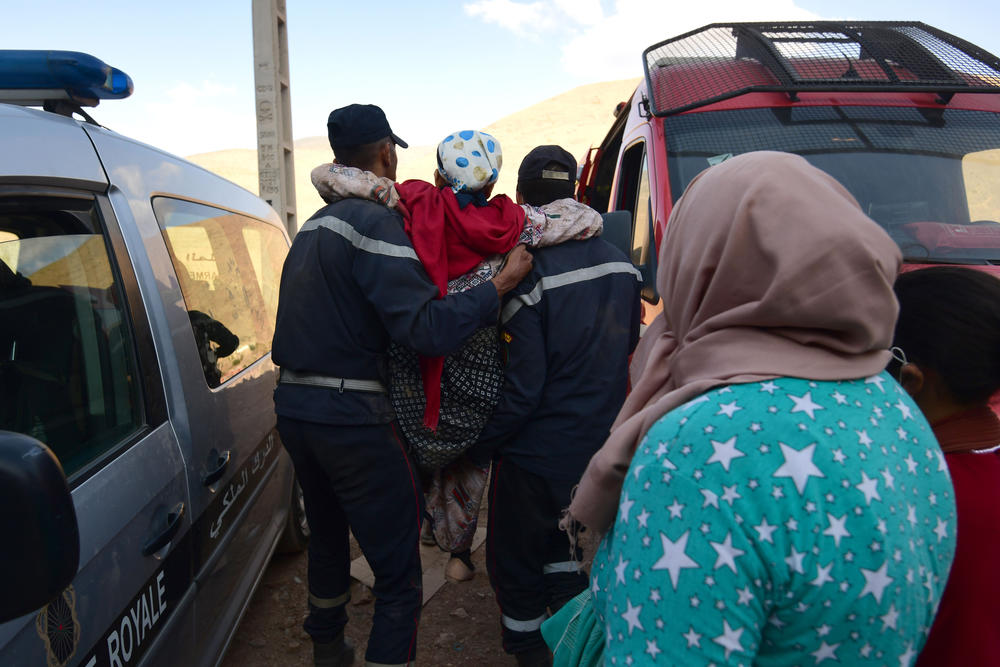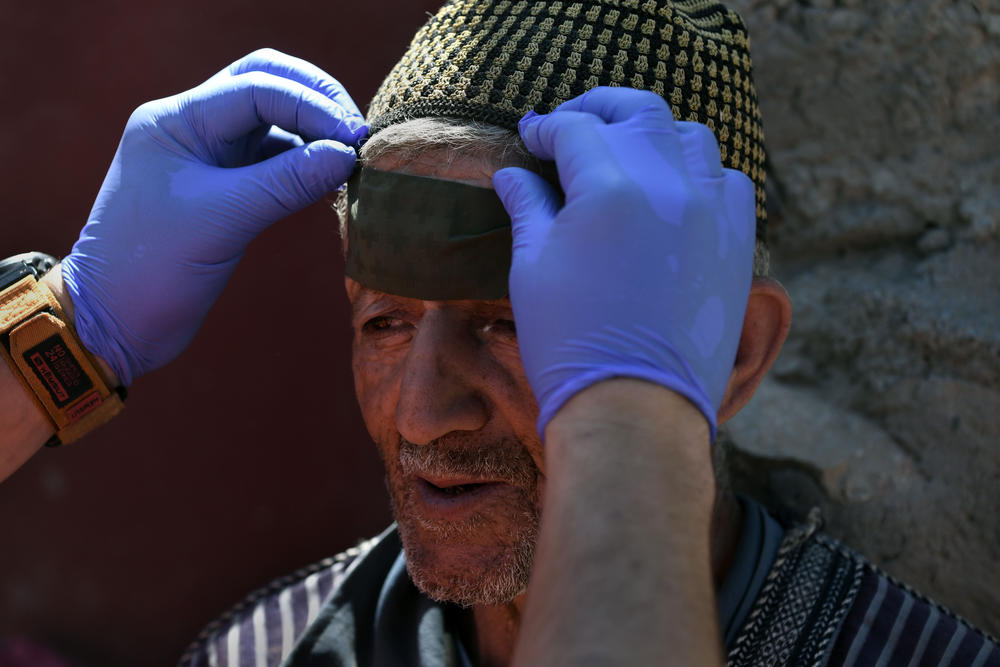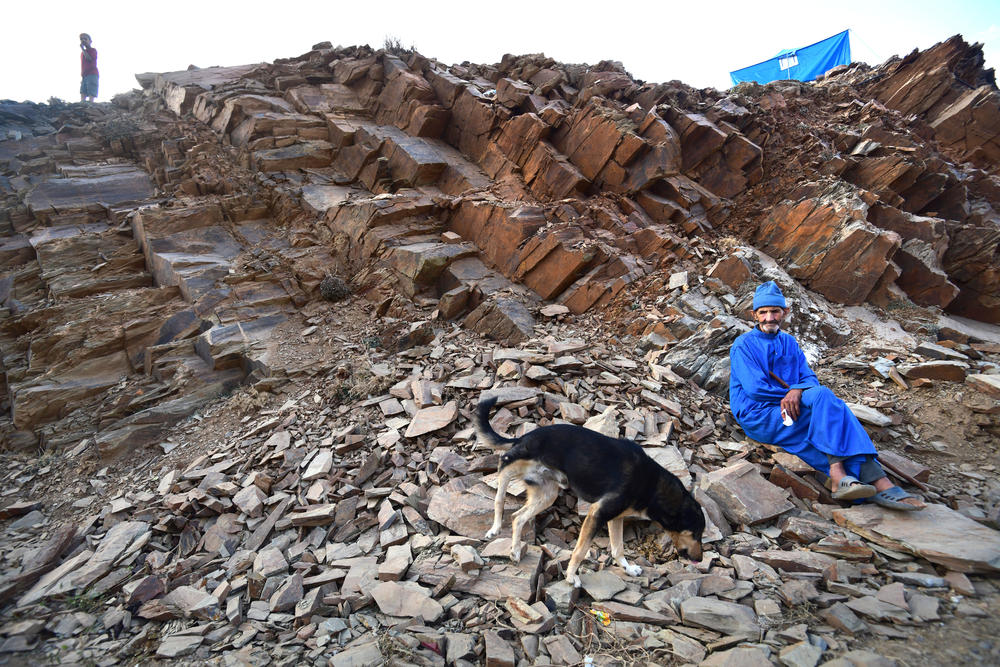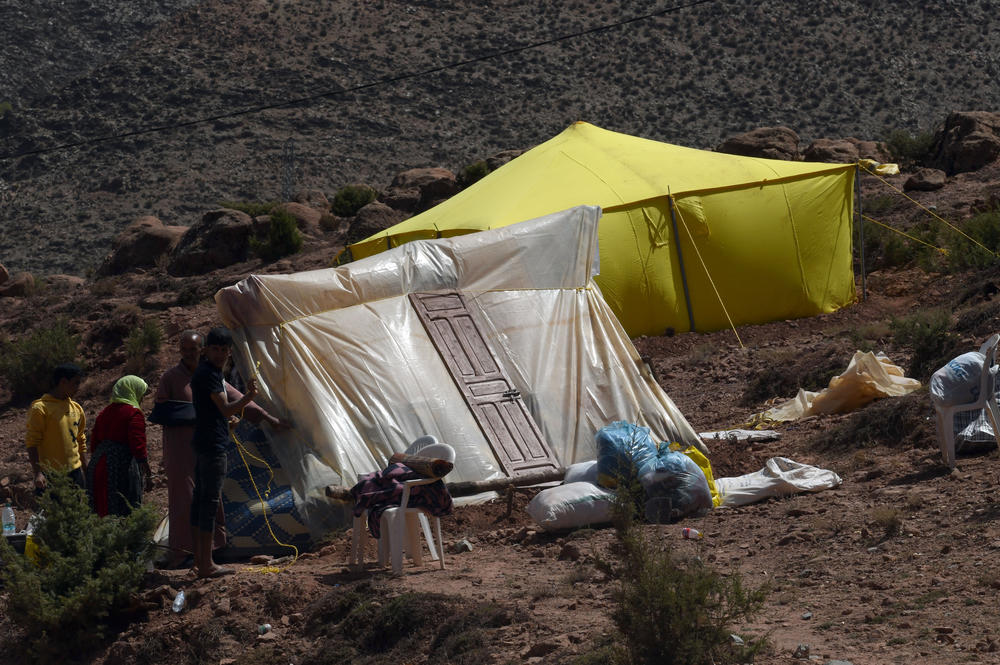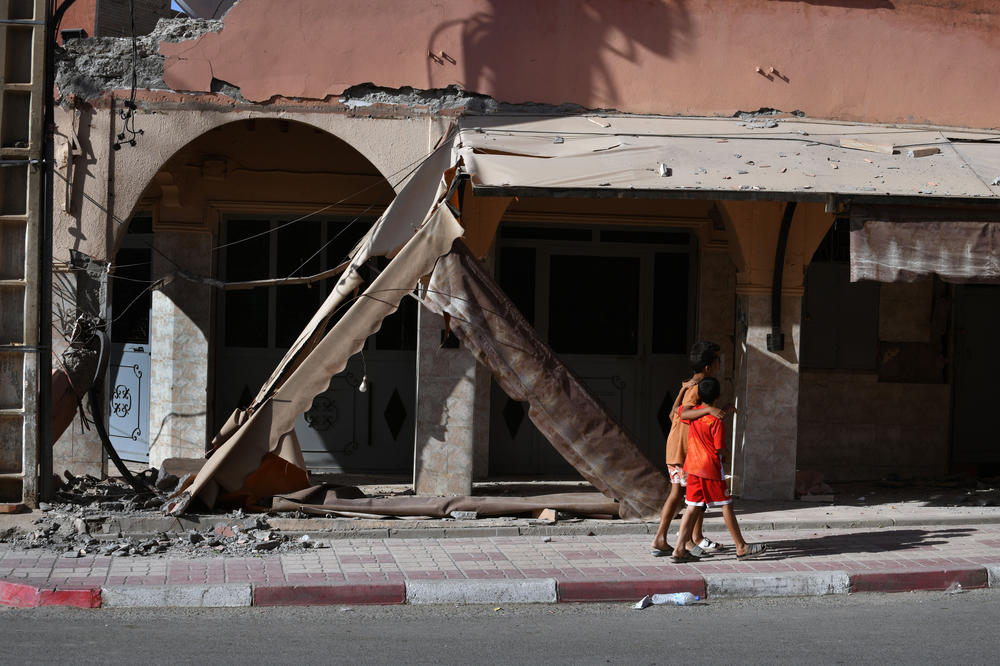Section Branding
Header Content
Morocco's earthquake crumbled much of this adobe village nestled in the mountain
Primary Content
IMI N'TALA, Morocco — One of the villages hardest hit by Morocco's recent earthquake was also one of its most iconic. Nestled below a cliff in the Atlas Mountains, Imi N'Tala was renowned among tourists and trekkers who ventured to the remote region for its natural beauty and a dose of Berber culture.
But Imi N'Tala is no more.
Part of the cliff was sheared off onto the village, and its adobe houses are a pile of rubble after the 6.8 magnitude earthquake shook the area on Sept. 8, causing mass death in mountain villages like this one close to the epicenter. The official death toll from the disaster in Morocco has climbed to nearly 3,000 people.
The few residents of Imi N'Tala who survived the quake now stay in white tents set up by the authorities on the hillside below their former homes. And the destruction — and aftershocks — have made rescue and recovery efforts difficult.
Fifty-eight-year-old Brahim Ait Ougadir made it out with his two children. He said they were lucky to be in a part of their house that had no roof and was open to the sky. He broke down talking about what life in Imi N'Tala used to be like.
"This was a very safe and generous village," he said. "We were all living together. Foreigners came here from all over the world to eat and sleep here for a few days. Nobody's ever been harmed here."
On the day last week that NPR visited, there were rescue teams with sniffer dogs scrambling over the rocks.
"There's no life here," said Dutch rescue worker Saad Attia. His team came with sniffer dogs trained to look for people who were still alive. Other teams had cadaver dogs that seek out corpses, which were the ones working at this site.
"You can smell the death here," Attia said. "You don't even need a dog to tell you there are no survivors. But it's good to have the dogs to isolate where the bodies are and show the rescue workers where they should dig."
Moroccan rescue teams were busy digging at two sites. The bodies were deep below the rocks, debris and soil, and the difficult work went on for hours under a blistering sun.
Buildings in this area — including houses, a hostel and a restaurant — were all made of mud earth bricks and stones. Some were a couple of stories high.
"Adobe has excellent thermal properties," said Mehrdad Sasani, a structural engineering professor at Northeastern University. "It keeps houses warm in winter and cool in summer, but when it crushes, it becomes like soil and powder, filling in all the spaces, so there are no air pockets for people to survive."
The earthquake struck around 11 p.m., so many people were inside and in bed.
As workers tried to pull out the body of a woman from the rubble, they strung up a blanket around the dig site to protect her privacy.
As the work stretched on, a few onlookers perched precariously on surrounding rocks and rubble. One man who villagers said was the woman's son clung to the top of a slanted slab of fallen sandstone, painfully watching the workers toil to extract his mother from the rubble.
After hours of digging, they pulled the woman's body out and immediately placed it in a body bag. Seven rescuers carried her down the mountainside — almost like pallbearers.
Within minutes she was placed in the ground again, but this time with a proper burial.
A line of men bowed their heads and prayed while women wept in front of her new grave in a patch of earth that has become Imi N'Tala's new cemetery.
Moments later, an aftershock hit the mountain and rescue workers scrambled to get away from the cliff face. Work in Imi N'Tala was called off for the rest of the day.
Copyright 2023 NPR. To see more, visit https://www.npr.org.
